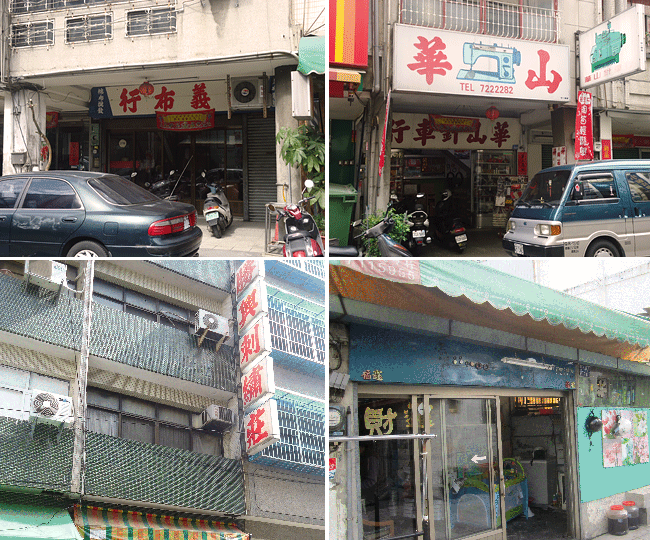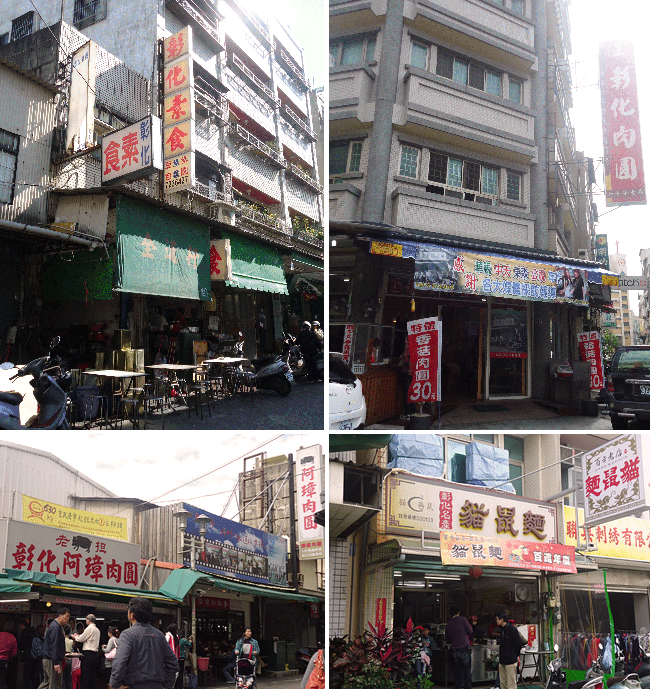

Chunghua old city has long gone, leaving the relics on Xiao-Xi Street.
Every brick has a story, story-telling sounds fascinating.Changhua
Zao-Yuan (meatballs) and Mao-Shu Mian (noodles), fabric shops and pubs.
They brought prosperity to Xiao-Xi, and activity in the area.Where did the
old times go? People and buildings were gone, and only sorrows remain.
Xiao-Xi residents gathered up, striving to bring back the olden times of
Xiao-Xi.Xiao-Xi revives itself and welcomes everyone to come by.
Yong-Ting:Hey, have you ever heard of Xiao-Xi Street in Chunghua City?
Pei-Jia:I googled it before. There is Bu-Xi Street in Chunghua City, not Xiao-Xi Street.
Yong-Ting:I don’t think so. I have read the relevant news about Xiao-Xi Street on the Internet. I believe Xiao-Xi Street does exist.
Ya-Han:Actually, both of the answers are correct. There IS Xiao-Xi Street in Chunghua City, just that Xiao-Xi Street is an old name where it can’t be found on the current map. As of the history of Xiao-Xi Street, here is the story.
【Xiao-Xi Street Overview】
There were four gates in ancient Chunghwa City in Ching Dynasty. Xiao-Xi Street was located between North Gate and West Gate. As Xiao-Xi Street was very close to the train station, and its geographical location was also a main road that connected Lo-Jin (current Lu-Gan) to the west, and Hu-Lou Dun (current Fong-Yuan) to the north. These two places are major lands of abundance for agricultural development and as distribution centers. Therefore, Xiao-Xi became a main distribution port for transportation and use.
Consequently, Xiao-Xi turned into a gathering spot for people’s everyday activities and special occasions, including weddings, funerals, and all sorts of business events.
People who gathered in groups, marching through the gates in high spirits, caught the eye of the businessmen, bamboo-weavers, butchers, and laundrymen. Even so, one couldn’t say it was public announcement, so much as a business opportunity.
![]()

![]()
During the period of Japanese colonization, the government considered the future development of the city by dismantling the gates and the wall. Luckily, Xiao-Xi street was preserved in terms of urban planning. However, Xiao-Xi street was considerably narrower as opposed to most of the streets in the city. Xiao-Xi “street” was hence degraded to Xiao-Xi “xiang” (lane) and being separated into halves by another cross street, Jie-Xi Ko (current Chang-An street). At that time, the (Xiao-Xi) street was well-known by people for the concentration of many clothes stores, ranging from fabric shops to garment stores. The Street appeared to be the center of garment industry for many segments like fabric, sewing needles, thread, embroidery, zippers, buttons, and low-cost hotels for the distributors.
The division of Xiao-Xi street became the landmark of prosperity. It gathered people together in the garment wholesale and fabrics industries. The popularity of the street was no less than current Wu Fen-Pu in Taipei City and Tian-Jin Street in Taichung City. The status of the street reached its climax in Chunghua history.
Along with the development of railroad in 1920's, the speed, weight, time, and money that was brought by the train has changed people’s minds and lives drastically. The existence of the train also changed the dynamics of Xiao-Xi Street. New buildings (Xing-Chu Street), pubs that were open all hours with people playing drinking games (Zuei-Xiang pub, Gao-bing pub), a hotel that took up half of the street (Ba-Gua hotel), as well as all sorts of goods for sale attracted people to stop by. People not only did business here to make money in the market, but also to invest in real estate. Therefore, they are hundreds of stories about how people climbed up the ladder.
Current Chang-An Street was part of Xiao-Xi Street. Nowadays it is named “Xiao-Xi xiang (lane)”. It used to have heavy traffic and a lot of people coming and going. The most symbolic gate becomes history as time goes by. With heavy impact of economic recession, the popularity of this area has seriously declined in recent years. In retrospect, residents on Xiao-Xi xiang (lane) assembled a team called “Rebuild Xiao-Xi Image Business Development Committee” to map out and talk about further development of the community on basis of its previous prosperity.
![]()

![]()
Chen-ling Rd and surrounding area-including four main food stores - A-Zang Zao-Yuan (meatballs), Changhua ba-wan (meatballs), Mao-Shu Mian (noodles), and vegetarian noodles , are important gathering spots on Xiao-Xi Street. Combining the food stores with Xiao-Xi Cultural spots will bring more opportunity for its future development.
Source : Chen, Bou-Nian (2004). “Chunghua old town revives its old image” research survey. Chunghua: Chunghwa Cultural Bureau.